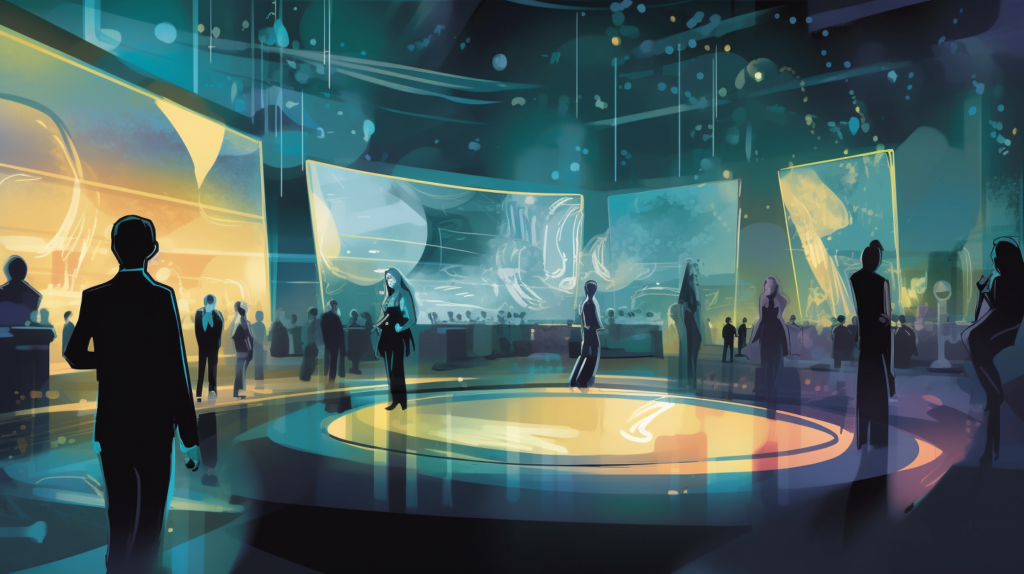Unleashing Creativity: 7 Proven Event Design and Planning Strategies
Introduction
Events hold the incredible power to captivate and engage attendees, leaving a lasting impression on their minds. As an event planner, tapping into the potential of creativity is essential for crafting unforgettable experiences. In this article, we will explore seven proven strategies that will help you unleash the full potential of creativity in event design and planning.
Understanding the Power of Creativity in Event Design
Creativity lies at the heart of exceptional events. It enables you to think outside the box, challenge traditional norms, and design immersive experiences that leave a lasting impact on attendees. By harnessing the power of creativity, you can transform ordinary events into extraordinary moments.
Why Effective Event Planning is Essential
Effective event planning is the backbone of any successful gathering. It ensures that all elements come together seamlessly, allowing attendees to fully immerse themselves in the experience. By employing meticulous planning and attention to detail, you can create an event that exceeds expectations and creates long-lasting memories.

Setting the Foundation
Before diving into the strategies, it’s crucial to lay a solid foundation for your event design and planning process. This stage serves as the guiding compass for all subsequent decisions.
Defining the Event’s Purpose and Goals
Begin by clearly defining the purpose and goals of your event. Whether it’s to inspire, educate, entertain, or raise awareness, a well-defined purpose will guide your decision-making process throughout the planning journey.
Identifying Target Audience and Key Stakeholders
Understanding your target audience and identifying key stakeholders is imperative to ensure your event resonates with the right people. Conduct thorough research and create audience personas to tailor your event to their preferences, making it an experience they won’t forget.
Conducting Market Research and Analysis
Market research and analysis provide valuable insights into trends, preferences, and industry benchmarks. Utilize this data to identify unique opportunities for differentiation and highlight your event’s competitive edge.
Strategy 1: Creating a Memorable Theme
A captivating theme sets the tone for your event and creates a cohesive experience for attendees. Implementing a theme involves several key considerations and creative decisions.
Choosing an Engaging and Relevant Theme
Selecting a theme that resonates with your audience is crucial. Consider current trends, cultural influences, and your event’s purpose to choose a theme that will captivate attendees from the moment they walk in.
Incorporating the Theme into Every Event Element
To maximize the impact of your chosen theme, weave it seamlessly into every aspect of your event. From invitations and signage to décor and entertainment, create a cohesive experience that keeps attendees fully immersed in the theme.
Utilizing Creative Visuals and Decorations
Creative visuals and decorations can transform any event space into a visually stimulating environment. Think beyond traditional decorations and incorporate unique elements, such as immersive installations or interactive displays, to enhance the overall experience.

Strategy 2: Crafting Unique Event Experiences
To make your event truly stand out, focus on crafting unique experiences that go beyond attendees’ expectations.
Designing Interactive and Immersive Environments
Creating interactive and immersive environments allows attendees to actively engage with the event. Introduce interactive displays, hands-on activities, or augmented reality experiences to make your event truly memorable.
Incorporating Unconventional Activities and Performances
Dare to be different by incorporating unconventional activities and performances that surprise and delight attendees. Consider engaging alternative artists, acrobats, or performers that reflect your event’s theme or purpose.
Enhancing Attendee Engagement through Technology
Leverage technology to enhance attendee engagement. Utilize mobile apps, interactive displays, or virtual reality experiences to elevate the event experience and create lasting memories.
Strategy 3: Innovative Event Branding and Communication
Effective branding and communication contribute to the overall success of your event, leaving a lasting impression on attendees and stakeholders alike.
Developing a Strong Brand Identity and Messaging
Create a strong brand identity for your event by defining the key messaging and visuals that align with the theme and purpose. Consistency in branding across all communication channels reinforces the event’s identity and makes it easily recognizable.
Utilizing Social Media and Online Platforms Effectively
Harness the power of social media and online platforms to build anticipation and engage with your target audience. Create captivating content, leverage influencers, and encourage user-generated content to generate buzz and enhance attendee participation.
Leveraging Influencers and Partnerships
Collaborate with influencers and strategic partners to expand your event’s reach and influence. Building partnerships with industry experts, influencers, or relevant organizations can lend credibility and attract a wider audience.

Strategy 4: Redefining Event Spaces
Explore unique event spaces to create a captivating atmosphere that resonates with attendees.
Exploring Non-Traditional Venues and Locations
Think outside the box and explore non-traditional venues and locations beyond the conventional conference halls. Whether it’s an abandoned warehouse, rooftop garden, or historical site, choosing an unconventional venue can add an element of surprise and intrigue to your event.
Incorporating Sustainable and Eco-Friendly Elements
Incorporate sustainable and eco-friendly elements into your event design. Use biodegradable materials, implement recycling and waste reduction initiatives, and consider the environmental impact when selecting vendors and suppliers. Showcasing your commitment to sustainability resonates with attendees who value environmental consciousness.
Incorporating Unique Layouts and Seating Arrangements
Rethink traditional event layouts and experiment with unique setups that encourage interaction and engagement. Introduce lounge areas, collaborative workspaces, or circular seating arrangements to foster networking and a sense of community.
Strategy 5: Leveraging Technology for Impactful Events
Technology has revolutionized event planning, offering numerous opportunities to enhance the attendee experience.
Utilizing Event Management Software and Apps
Simplify event planning logistics and streamline attendee registration with event management software and apps. These tools help you manage resources, track attendance, and provide real-time updates, making the event experience more efficient and enjoyable for all.
Integrating Augmented Reality and Virtual Reality
Leverage augmented reality and virtual reality to offer attendees immersive and interactive experiences. From virtual tours to gamified interactions, these technologies can transport attendees to different worlds and add an extra layer of excitement to your event.
Incorporating Livestreaming and Hybrid Event Concepts
Extend your event’s reach by incorporating livestreaming and hybrid event concepts. Livestreaming allows remote attendees to experience your event in real-time, while hybrid events offer a blend of in-person and virtual elements, maximizing accessibility and engagement.
Strategy 6: Enhancing Event Networking and Collaboration
Networking and collaboration are essential components of successful events. Creating opportunities for attendees to connect and collaborate fosters a sense of community and enriches the overall experience.
Designing Effective Networking Areas and Activities
Dedicate specific areas or activities within your event for networking purposes. Create cozy lounges, organize speed networking sessions, or host interactive workshops to encourage meaningful connections among attendees.
Facilitating Meaningful Connections through Gamification
Introduce gamification elements to your event to incentivize networking and collaboration. Encourage attendees to participate in challenges, competitions, or scavenger hunts that promote interaction and engagement.
Implementing Collaborative Workshops and Discussions
Organize collaborative workshops or interactive panel discussions to stimulate dialogue and learning. Encourage attendees to actively participate by sharing their expertise and experiences, fostering a sense of community and knowledge exchange.

Strategy 7: Measuring Success and Continual Improvement
To ensure your event’s success and drive future innovation, it’s crucial to measure its impact and continually seek opportunities for improvement.
Collecting Feedback and Utilizing Surveys
Collect feedback from attendees and stakeholders through surveys or post-event evaluations. Analyzing this feedback provides valuable insights into attendees’ experiences, highlights areas for improvement, and enables you to refine your event design process.
Analyzing Data and Metrics for ROI Evaluation
Leverage data and metrics to evaluate the return on investment (ROI) of your event. Measure attendance rates, engagement levels, and post-event sales to assess the event’s success and identify areas where future investments can be optimized.
Implementing Learnings into Future Event Designs
Ensure a culture of continuous improvement by incorporating the learnings from each event into future designs. Leverage the insights gained to refine strategies, explore new ideas, and push the boundaries of creativity in event design and planning.
Conclusion
Unleashing creativity is a powerful tool for designing and planning exceptional events. By implementing these seven proven strategies, you can create unforgettable experiences that captivate attendees and leave a lasting impact.
Emphasize the power of unleashing creativity in event design and planning. Encourage future exploration, innovation, and the pursuit of extraordinary events that push the boundaries of imagination.
FAQs
- What should I consider when selecting an event theme?
- When selecting an event theme, consider the preferences and interests of your target audience. Ensure it aligns with your event’s purpose and goals.
- How can I maximize attendee engagement during an event?
- To maximize attendee engagement, focus on creating interactive and immersive environments, incorporating unique activities and performances, and leveraging technology to enhance the event experience.
- What are the potential benefits of utilizing unconventional event spaces?
- Utilizing unconventional event spaces adds an element of surprise and intrigue, making your event more memorable. It also allows for creative event layouts and provides opportunities to align with eco-friendly initiatives.
- How can technology enhance networking experiences at events?
- Technology can enhance networking experiences at events by offering virtual networking platforms, facilitating gamified interactions, and providing tools for easy communication and collaboration among attendees.
- What are some key indicators of event success?
- Key indicators of event success include attendee satisfaction, engagement levels, post-event sales, and return on investment. Collecting feedback, analyzing data, and evaluating metrics are essential for measuring success.


